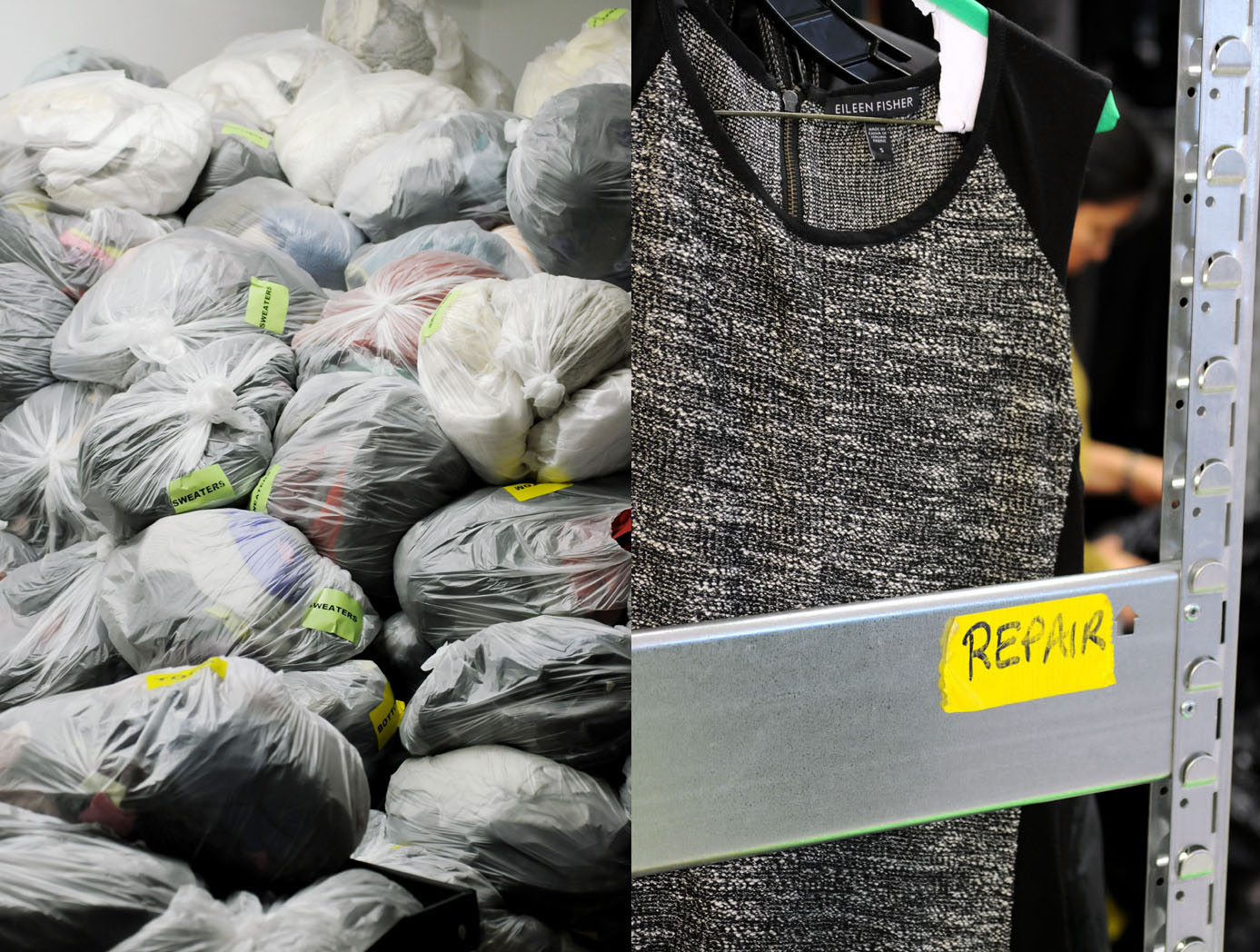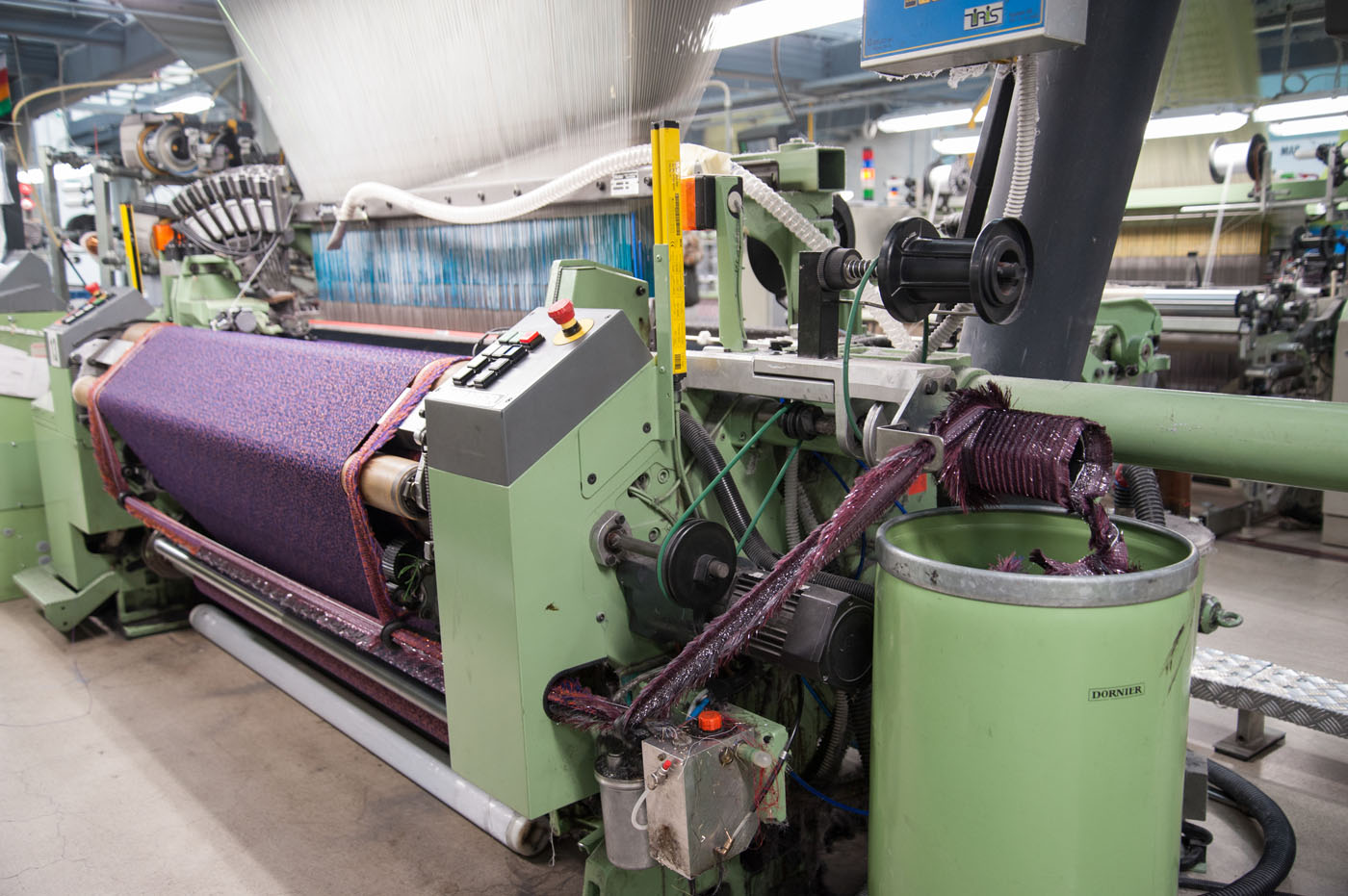
Images of Green Eileen sorting facility. Image Magali An Berthon (2016)
People commonly associate textile waste with the shirt they no longer use, the pair of socks they inadvertly put in the trash, the bag of clothes they give to charity. In addition to these post-consumer discards, waste is created in the manufacturing process.[1] It is called pre-consumer, or post-industrial waste. This type of waste can be generated at any point of the production line, from spinning to weaving to cut-make-sew operations. It includes comber noils (short fibers of cotton or wool separated from the long fibers in combing), yarn waste, garment cutting excess, trimmings, print trials, errors in dye lots, production surplus and end of rolls. In the United States, textile manufacturers recycle approximately 75 percent of the pre-consumer textile waste they generate. Each year about 750,000 tons of materials are diverted from the solid waste stream of the manufacturing process and treated by companies such as Martex Fiber which recycle them into new materials for industrial purposes. They are then used for the automotive sector, furniture, mattress, in coarse yarn, home furnishings, and paper. Improving waste management can benefit manufacturers on many levels: by maximizing fiber reuse and reducing the purchase of new raw materials, increasing profitability, and reducing environmental impacts. However these methods are not applied in every country. In Australia, most pre-consumer textile waste is sent to landfills. [2]
To address the issue of pre- and post-consumer textile waste, prevention is the most preferable option. It starts with analyzing the life cycle of each new item and its environmental impact. Then, waste generation should be minimized at each step of the industrial chain, from a well-thought out design process to a better planning of the mill and its processes. Finally recycling should be implemented in-process. Waste textiles including cutting scraps can be separated by fiber type, shredded, and turned into yarn that is used again during production.

Silk selvage waste collected in Mantero’s mill in Italy. Courtesy of Mantero.
[1] Recycling Today Staff, “The North Face Expands its Clothes the Loop Campaign,” in Recycling Today, April 24, 2015, accessed July 10, 2016, http://www.recyclingtoday.com/article/north-face-expands-clothes-the-loop/
[2] Kerryn Caulfield, “Discussion Paper: Sources of Textile Waste in Australia,” in National Association of Charitable Recycling Organizations (NACRO), 2009, accessed November 27, 2015, http://www.nacro.org.au/wp-content/uploads/2013/04/TEXTILE-WASTE-PAPER-March-2009-final.pdf
About the Author
Magali An Berthon is a textile researcher and designer, focusing in particular on world textile crafts and sustainable fashion. After an MFA in textile design in Paris, she studied textile history at the Fashion Institute of Technology NY on a Fulbright fellowship in 2014. Since June 2015, she is a curatorial fellow at the Textile Department at Cooper Hewitt, Smithsonian Design Museum.
Scraps Stories
This post is part of the blog series Scraps Stories dedicated to exploring sustainable textiles and fashion, in relation to the exhibition Scraps: Fashion, Textiles, and Creative Reuse.
One thought on “Textile Waste Comes in Many Forms”
Slowfashionuy on February 17, 2017 at 2:31 pm
interesting information. Is so important to be more conscious about whats happening with the fashion industry and the waste she generate.